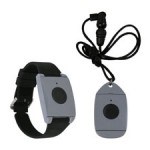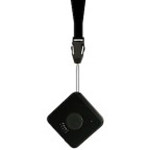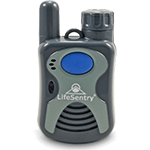The ABCs of an Emergency Situation
A lot of seniors today do not have peace of mind for several reasons. One, they are bothered by the changes that happened with their physical body. Just imagine being able to walk independently during your younger years, and then gradually lose all of these things? Secondly, most seniors no longer have the presence of their children and other family members. Most of the “old folks” now are living alone, and basically are living in empty nests. Their kids have left trying to pursue a career. When it comes to emergency situations, these are some of the things that make it hard for them to reach the medical professionals during their time of need. When walking a few steps could take minutes or hours, it is imperative to minimize the lag between the accident, or the medical emergency and the time when the medical professionals arrive.
Things that Can Happen in Minutes
In a matter of minutes, the lack of oxygen in the brain can cause irreparable brain damage by killing brain cells. Just imagine a senior not getting enough oxygenated blood to the brain usually caused from a heart attack or asphyxia? These are some things that can be the difference between life and death.
So what should be done in order to save lives? For most of us, it is ideal for us to know how to assess a situation and carry out proper medical care. OIf you are unfamiliar with a situation, you should not interfere and seek professional help. There are ABCs in terms of assessment and carrying out medical care to anyone in an emergency situation. These ABCs have become useful especially during catastrophic events in providing triage.
A- Airway
Airway is the main priority above all types of concerns. With an obstructed airway, air cannot get into the lungs and can hasten a fatal situation because there will be no oxygen that can be transported by the blood. How to know if there is a problem with the airway? Checking for obstruction is the first thing that you need to do. You will first need to check for any signs of obstructions by the mouth or throat that could prevent air from coming in. This is the reason why medical professionals turn the patient into their right side to avoid the tongue to block the airway.
B- Breathing
Breathing is the process of getting air into the lungs. Using breathing organs, the body inhales oxygen and exhales carbon dioxide. Without the lungs getting oxygen, it is also tantamount to not having oxygenated blood. During cardio-pulmonary resuscitation, it is important to assess if the person is breathing by putting the cheek into the person’s nose. Once the person is not breathing, the one conducting CPR will have to give two initial breathes via mouth, while covering the nose of the one receiving CPR.
C- Circulation
Circulation is the third priority that you need to look into for any type of emergency. Among the signs that someone is not getting enough oxygen because of a circulation problem, they may have a weak pulse. By palpating the carotid arteries, you will know if there is a weak, or even an absent pulse. Also, look for the danger signs like the lips that are turning blue. It is also considered a circulation problem if the person is bleeding. Most of these cases require someone to be put on shock position, where their legs will be raised in order to prioritize perfusion into the brain.
Why Medical Alarm Equipments Matter?
A lot of older individuals prefer to live independently. The problem with these types of scenarios is that they typically live on their own, without any type of medical professional to attend to them and have no backup method or primary method other than the telephone for calling help. Thanks to the advances in technology, it is now possible to get immediate medical help with medical alert systems. Medical alert systems simplify the process of getting immediate medical help as it provides the users with a bracelet which can allow communication easily. The goal for this type of device is to minimize the waiting time especially during a medical emergency, when every minute counts and could mean life or death.

Linear PERS
Our most basic medical alert system; includes both a bracelet and necklace attachment.
Linear PERS Product Page

eResponder
A mobile medical alert; speak directly to an operator through the wearable device.
eResponder Product Page

LifeSentry
Speak directly through both the bracelet and necklace 24/7 to an EMT certified operator.
LifeSentry Product Page

